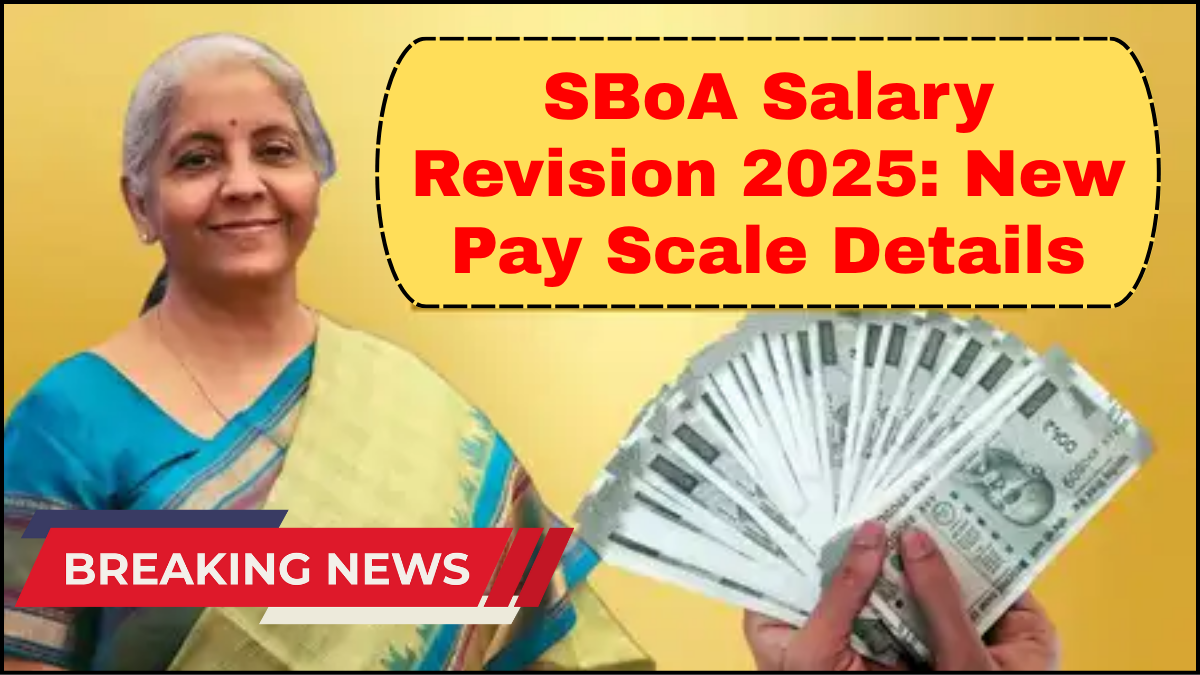The SBoA Salary Revision 2025 is a major development in the Indian banking sector, particularly for officers across public sector banks. Every five years, salary structures for bank employees are reviewed and renegotiated, impacting pay, allowances, and benefits. The 2025 revision is expected to be a game-changer for officers in scale I to VII, with updated compensation packages that reflect inflation, market dynamics, and performance expectations.
This comprehensive guide covers the expected changes in the Bank Officers new pay scale, allowances, arrears, and broader implications of the upcoming SBoA salary structure overhaul.

Understanding the SBoA Salary Revision Framework
The term SBoA (Salary and Benefits Agreement) refers to the official negotiation process between the Indian Banks’ Association (IBA) and various officers’ associations. These discussions determine the pay structure for officers working in public sector banks, including prominent banks like SBI, PNB, BoB, and others.
The SBoA Salary Revision 2025 will replace the 11th Bipartite Settlement (implemented in 2020) and aims to restructure pay and perks in alignment with evolving financial sector standards. It will cover all officers from Junior Management Grade (Scale I) to Senior Management and Executive Grades (Scale VII and above).
Expected Changes in Bank Officers’ New Pay Scale
While the final structure is still under negotiation, several key expectations and trends are emerging based on internal circulars and previous revision patterns:
1. Basic Pay Hike
A 15% to 20% increase in basic pay is anticipated. For example, officers currently earning ₹36,000 (JMGS-I) as basic may see a hike to approximately ₹42,000–₹44,000.
2. Revised Pay Bands and Stagnation Increments
The number of stagnation increments is likely to be revised upward to reduce long-term stagnation. This change will benefit mid-level officers in MMGS-II and MMGS-III grades who have remained in the same scale for years.
3. Improved Dearness Allowance (DA) Structure
The new DA formula may shift from the current CPI-linked system to a more dynamic model, better reflecting real inflation. This could help preserve the purchasing power of bank officers despite rising living costs.
4. Performance-Linked Incentives (PLI)
The PLI model, introduced in the 2020 settlement, is expected to be strengthened. Officers in high-performing branches may receive annual bonuses of up to 15% of their annual salary, enhancing motivation and accountability.
5. Enhanced Special Allowance
The special allowance component, currently constituting nearly 16.4% of basic pay, might be increased or absorbed into basic pay to improve pension calculations.
Other Key Allowance Revisions
The SBoA Salary Revision 2025 isn’t just about basic pay—it also addresses a wide range of allowances:
-
House Rent Allowance (HRA): Likely to be revised with new city classification norms. Officers posted in metro cities may see HRA increase from 9% to 10-12%.
-
Travel Allowance: Expected to rise, especially for officers frequently required to travel between branches or zones.
-
Medical Benefits: Medical reimbursement limits are expected to be enhanced in line with private sector benchmarks.
-
Leave Encashment & LFC (Leave Fare Concession): Officers may benefit from more flexible and better-valued LFC options.
Arrears and Retrospective Effect
The revised pay is typically implemented with retrospective effect from November 1, 2022 (following the five-year revision cycle). As a result, officers are likely to receive arrears for over two years, depending on the final agreement.
Implications for Pensions and Retirement Benefits
One of the most crucial aspects of this revision is its impact on pensionable salary. If the special allowance is merged into basic pay, it would increase post-retirement benefits for thousands of officers. Senior officers nearing retirement are particularly keen on this provision being accepted.
Role of Officers’ Associations
Organizations like AIBOC (All India Bank Officers’ Confederation) and other unions are actively pushing for a favorable outcome. Their key demands include:
-
Merger of allowances with basic pay for pension purposes
-
Introduction of five-day banking week
-
Elimination of stagnation for Scale III and above
-
Improved working conditions and digital tools to reduce workload
Why the SBoA Salary Revision 2025 Matters
The upcoming revision is not just about pay raises—it represents a structural correction. As the banking ecosystem faces increasing digitalization, rising NPAs, and stricter performance benchmarks, it’s crucial that officer compensation remains competitive to retain talent and attract new professionals.
FAQs on SBoA Salary Revision 2025
Q1: What is the effective date for the SBoA Salary Revision 2025?
A: The revision is expected to take retrospective effect from November 1, 2022, similar to previous cycles.
Q2: Will the salary revision apply to all public sector bank officers?
A: Yes, it will cover officers from Scale I to Scale VII across all public sector banks.
Q3: Is there any confirmed percentage increase in basic pay?
A: While not final, a 15% to 20% hike is the most widely anticipated range.
Q4: What is happening with the special allowance?
A: Discussions are ongoing about merging it with basic pay to enhance pension calculations.
Q5: Will there be arrears?
A: Yes, officers are likely to receive arrears from November 2022 up to the date of implementation.
click here to learn more